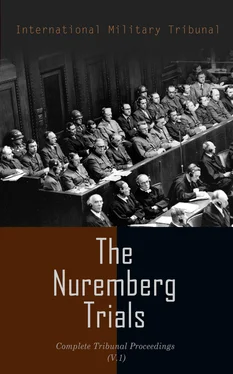4. Two orders from 23 to 24 August 1942 imposed by force German nationality on French citizens.
5. On 8 May 1941, for Upper Rhine and Lower Rhine, 23 April 1941, for Moselle, orders were promulgated enforcing compulsory labor service on all French citizens of either sex aged from 17 to 25 years. From 1 January 1942 for young men and from 26 January 1942 for young girls, national labor service was effectively organized in Moselle. It was from 27 August 1942 in Upper Rhine and in Lower Rhine for young men only. The classes 1940, 1941, 1942 were called up.
6. These classes were retained in the Wehrmacht on the expiration of their time and labor service. On 19 August 1942, an order instituted compulsory military service in Moselle. On 25 August 1942, the classes 1940-44 were called up in three departments. Conscription was enforced by the German authorities in conformity with the provisions of German legislation. The first revision boards took place from 3 September 1942. Later in Upper Rhine and Lower Rhine new levies were effected everywhere on classes 1928 to 1939 inclusive. The French people who refused to obey these laws were considered as deserters and their families were deported, while their property was confiscated.
These acts violated Articles 43, 46, 55, and 56 of the Hague Regulations, 1907, the laws and customs of war, the general principles of criminal law as derived from the criminal laws of all civilized nations, the internal penal laws of the countries in which such crimes were committed, and Article 6 (b) of the Charter.
IX. Individual, group, and organization responsibility for the offense stated In Count Three
Reference is hereby made to Appendix A of this Indictment for a statement of the responsibility of the individual defendants for the offense set forth in this Count Three of the Indictment. Reference is hereby made to Appendix B of this Indictment for a statement of the responsibility of the groups and organizations named herein as criminal groups and organizations for the offense set forth in this Count Three of the Indictment.
COUNT FOUR—CRIMES AGAINST HUMANITY
Table of Contents
(Charter, Article 6, especially 6 (c))
X. Statement of the Offense
All the defendants committed Crimes against Humanity during a period of years preceding 8 May 1945 in Germany and in all those countries and territories occupied by the German armed forces since 1 September 1939 and in Austria and Czechoslovakia and in Italy and on the High Seas.
All the defendants, acting in concert with others, formulated and executed a common plan or conspiracy to commit Crimes against Humanity as defined in Article 6 (c) of the Charter. This plan involved, among other things, the murder and persecution of all who were or who were suspected of being hostile to the Nazi Party and all who were or who were suspected of being opposed to the common plan alleged in Count One.
The said Crimes against Humanity were committed by the defendants and by other persons for whose acts the defendants are responsible (under Article 6 of the Charter) as such other persons, when committing the said War Crimes, performed their acts in execution of a common plan and conspiracy to commit the said War Crimes, in the formulation and execution of which plan and conspiracy all the defendants participated as leaders, organizers, instigators, and accomplices.
These methods and crimes constituted violations of international conventions, of internal penal laws, of the general principles of criminal law as derived from the criminal law of all civilized nations and were involved in and part of a systematic course of conduct. The said acts were contrary to Article 6 of the Charter.
The Prosecution will rely upon the facts pleaded under Count Three as also constituting Crimes against Humanity.
(A) MURDER, EXTERMINATION, ENSLAVEMENT, DEPORTATION,
AND OTHER INHUMANE ACTS COMMITTED
AGAINST CIVILIAN POPULATIONS BEFORE AND DURING
THE WAR
For the purposes set out above, the defendants adopted a policy of persecution, repression, and extermination of all civilians in Germany who were, or who were believed to be, or who were believed likely to become, hostile to the Nazi Government and the common plan or conspiracy described in Count One. They imprisoned such persons without judicial process, holding them in “protective custody” and concentration camps, and subjected them to persecution, degradation, despoilment, enslavement, torture, and murder.
Special courts were established to carry out the will of the conspirators; favored branches or agencies of the State and Party were permitted to operate outside the range even of nazified law and to crush all tendencies and elements which were considered “undesirable”. The various concentration camps included Buchenwald, which was established in 1933, and Dachau, which was established in 1934. At these and other camps the civilians were put to slave labor, and murdered and ill-treated by divers means, including those set out in Count Three above, and these acts and policies were continued and extended to the occupied countries after 1 September 1939, and until 8 May 1945.
(B) PERSECUTION ON POLITICAL, RACIAL, AND RELIGIOUS
GROUNDS IN EXECUTION OF AND IN CONNECTION WITH THE
COMMON PLAN MENTIONED IN COUNT ONE
As above stated, in execution of and in connection with the common plan mentioned in Count One, opponents of the German Government were exterminated and persecuted. These persecutions were directed against Jews. They were also directed against persons whose political belief or spiritual aspirations were deemed to be in conflict with the aims of the Nazis.
Jews were systematically persecuted since 1933; they were deprived of their liberty, thrown into concentration camps where they were murdered and ill-treated. Their property was confiscated. Hundreds of thousands of Jews were so treated before 1 September 1939.
Since 1 September 1939, the persecution of the Jews was redoubled: millions of Jews from Germany and from the occupied Western Countries were sent to the Eastern Countries for extermination.
Particulars by way of example and without prejudice to the production of evidence of other cases are as follows:
The Nazis murdered amongst others Chancellor Dollfuss, the Social Democrat Breitscheid, and the Communist Thälmann. They imprisoned in concentration camps numerous political and religious personages, for example Chancellor Schuschnigg and Pastor Niemöller.
In November 1938, by orders of the Chief of the Gestapo, anti-Jewish demonstrations all over Germany took place. Jewish property was destroyed, 30,000 Jews were arrested and sent to concentration camps and their property confiscated.
Under paragraph VIII (A), above, millions of the persons there mentioned as having been murdered and ill-treated were Jews.
Among other mass murders of Jews were the following:
At Kislovdosk all Jews were made to give up their property: 2,000 were shot in an anti-tank ditch at Mineraliye Vodi: 4,300 other Jews were shot in the same ditch.
60,000 Jews were shot on an island on the Dvina near Riga.
20,000 Jews were shot at Lutsk.
32,000 Jews were shot at Sarny.
60,000 Jews were shot at Kiev and Dniepropetrovsk.
Thousands of Jews were gassed weekly by means of gas-wagons which broke down from overwork.
As the Germans retreated before the Soviet Army they exterminated Jews rather than allow them to be liberated. Many concentration camps and ghettos were set up in which Jews were incarcerated and tortured, starved, subjected to merciless atrocities, and finally exterminated.
About 70,000 Jews were exterminated in Yugoslavia.
XI. Individual, Group and Organization Responsibility for the Offense Stated in Count Four
Читать дальше












